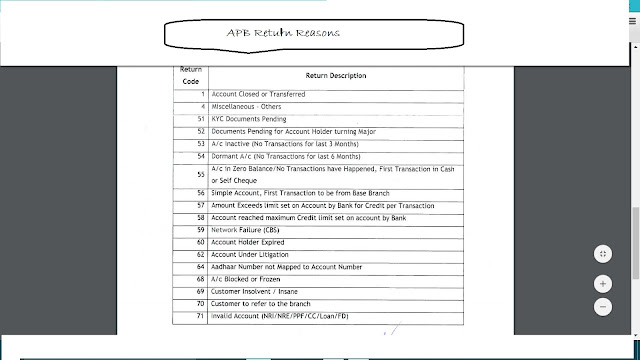Indian Railways Freight Services – Please onboard BBPS
The butter of the Indian
Railways is the freight traffic.
For the Financial year
2020-21, Freight earnings till February 2020 stood at Rs 119,216.11 crore (US$
17.06 billion).
Revenue growth has been
strong over the years. Indian Railways’ gross revenue stood at Rs 183,092.74
crore (US$ 26.20 billion) in FY20 (till February 2020).
Passenger earnings for
Indian Railways was estimated at 51,077.73 crore (US$ 7.31 billion) in FY20
(till February 2020).
Freight remains the major
revenue earning segment for Railways, accounting for 65.1 per cent of its total
revenue in FY20 (till February 2020), followed by the passenger segment.
This means Indian Railways
collects more than 1,20,000 crores through its Freight Operations Information
System (FOIS).
Computerisation of the
Freight Operations Information System: The FOIS enables management and control
of freight movement, optimised asset utilisation and the generation of
invoices. Many of IR's larger freight customers pay through an electronic
payment gateway interfaced with the FOIS.
E-Payment For electronic payment
of freight for
any commodity like
Coal booked at a terminal like Power House like BTPS from collieries on
ECR. Originating point intimates electronically the freight charges due
to the bank
eg SBI or any other Indian
Railways authorised bank.
After receipt
of "Successful Transaction" message
- electronic confirmation from
the bank of this transaction confirming the debit from BTPS account, RR is
printed at the originating point. It is a synchronous transaction and reply is
normally received within 2 minutes
Indian Railways achieves
milestone in pulling freight traffic, earns Rs 306.1 crore amid COVID-19
challenges
Indian Railways will
publicise direct contact numbers and website details which can be accessed by
traders for transporting freight, enhancing their ease.
The Covid19
experience:
On August 19, 2020, the
freight loading was 3.11 million tonnes which is higher than last year for the
same date (2.97 million tonnes).
On the same date, Railways
earned Rs 306.1 crore from freight loading which is Rs 5.28 crore higher than
last year for the same date
Till 19th August 2020, the
total freight loading is 57.47 million tonnes which is higher than last year
for the same period (53.65 mn tonnes)
Notably,
Indian Railways is going to promote Railways’ freight service, making traders,
businesses, and suppliers aware of the benefits associated with transportation
through railways.
This
is where BBPS can assist Indian
Railways for quick, error-free collection of Freight Charges.
The
existing FOIS ePayments Module is suitable for regular users of Indian Railways
Freight services. The LC/BG calculation enables regular users to quickly and
easily remit the freight charges to Indian Railways.
The
existing FOIS ePayments Module also enables Indian Railways to collect the
freight charges before the goods are actually transported.
However,
this may be a bit cumbersome for new segments which Indian Railways is targeting.
Indian
Railways is embarking on a major awareness drive to promote Railways’ freight
service, amongst traders, businesses, and suppliers across India.
As
per the plan, Indian Railways plans to publicise direct contact numbers and
website details which can be accessed by traders for transporting freight,
enhancing their ease.
BBPS can be one-stop Freight Charges Collection
Channel for Indian Railways.
01) Indian
Railways various Zones for example Central Railway, East Central Railway, East
Coast Railway onboard BBPS as Biller
02) CRIS
develops a separate module in FOIS for non-recurring customers.
03) Non-recurring
customers login to the new module, complete the freight booking formalities and
click on the BBPS Payments Screen.
04) A
pre-filled challan is generated with a Unique BBPS Invoice Number
05) The customer logs into any BBPS App, chooses the respective Railway Biller,
retrieves the Invoice and complete the payment.
06) The
actual payment mode, Cash/eWallet/Net Banking/Debit Card/Credit Card/Pay Later/IMPS/UPI
is left to the customer.
07) After the actual payment, the Final eInvoice
is generated in the module and shared with the respective users.
08) This
will be a win-win process for all the participants.
References:
01)
SBI's Presentation to Indian Railways at
New Delhi on 10.11.2018 @ http://irastimes.org/Article_pdf/SBI%20Digital-%20Railways%202018-Final.pdf
02)
GOVERNMENT OF INDIA (BHARAT SARKAR),
MINISTRY OF RAILWAYS (RAIL MANTRALAYA)
RAILWAY
BOARD, Rates Circular No. 39/2008, No.TC-1/2004/104/1-pt. New Delhi, dated
04.08.2008 @ https://logisticallyyours.files.wordpress.com/2012/01/rc-39-dt-04-08-08-guildelines-for-electronic-payment-system.pdf
03)
Railway Board Master Circular on ePayments.
Cir No TC-I/2019/104/2 DT.27/08/2019 @
04)
Freight Operations Information System
(FOIS) @ https://indianrailwayemployee.com/content/freight-operations-information-system-fois
E-Payment
- E-payment means payment of freight by debiting customer’s account and
crediting Railways account with bank online.
This
facility is provided to corporate customer.
This
facility is developed by CRIS which acts as a co-coordinator between Indian Railway
and Bank.
This
facility can be provided at TMS (FOIS) locations only.
Salient
Features: -
1)
Customer must have an account exclusively for this purpose at any internet banking
enabled branch.
2)
Quadripartite agreement is to be signed among bank customer and Railway. After
signing agreement Railways will give a unique customer code.
3)
Customer will open an irrevocable inland letter of credit (LC) bank credit with
the bank in favour of Railway for a minimum amount equal to 2 days average
freight during busy season in last financial year.
4)
At loading point/terminal the goods clerk will key in customer code and other particulars
through TMS.
5)
Above data is captured by CRIS and passed on to bank.
6)
Bank will process the data, and debit the freight from- customer’s account and credit
the same to Railway Account.
7)
On getting success message FOIS will generate paid ERR. In case of unsuccessful
transaction, FOIS will generate paid ERR up to the LC limit, thereafter TO-pay
RR will be generated.
8)
This facility is introduced to provide better service to rail customers and to reduce
cash transactions.



Comments
Post a Comment